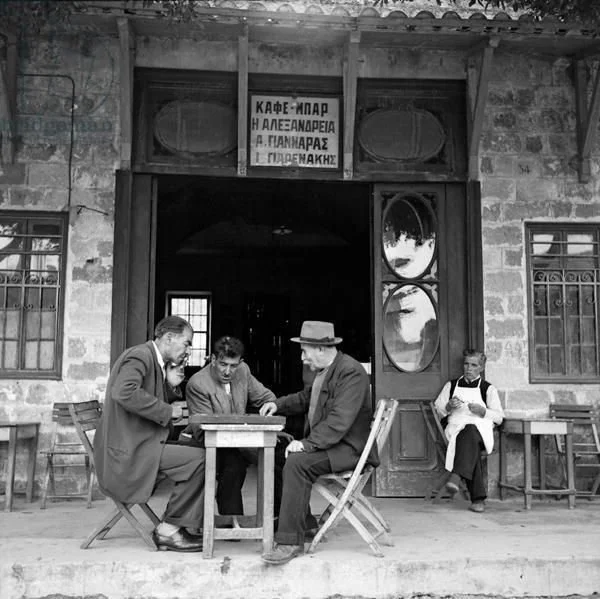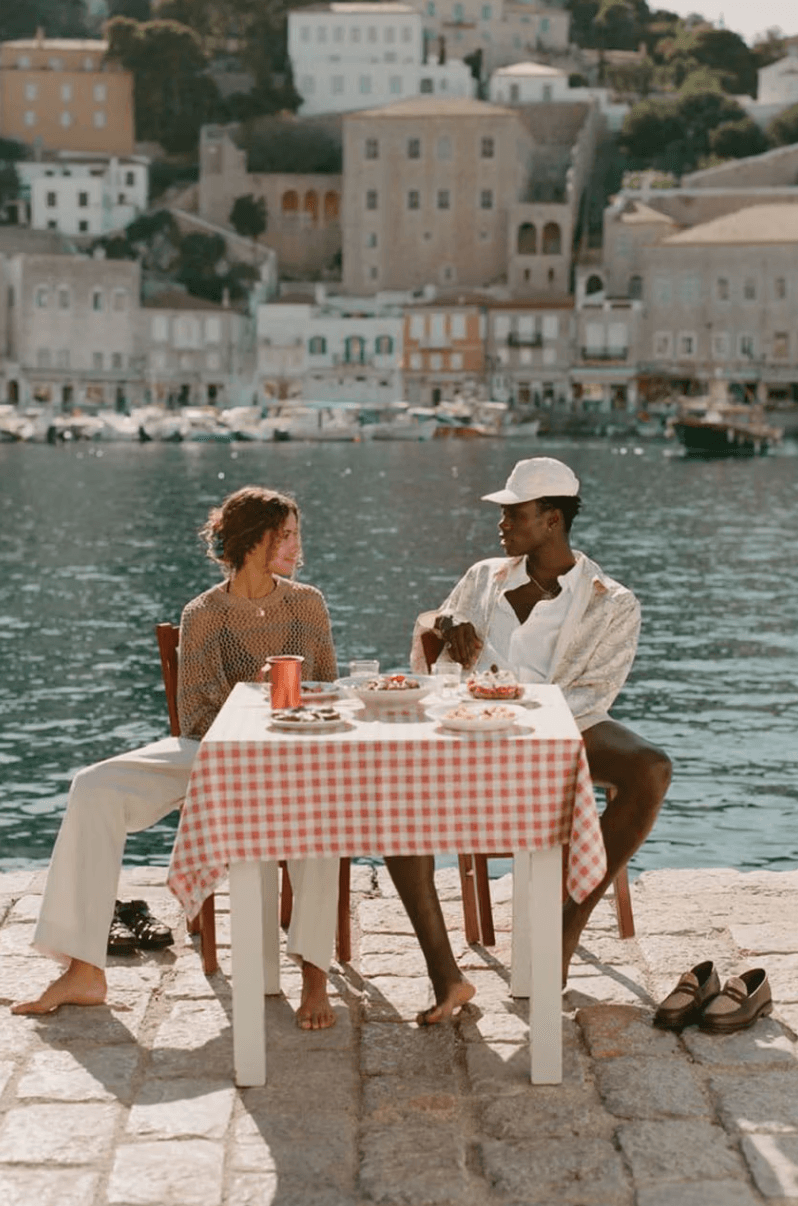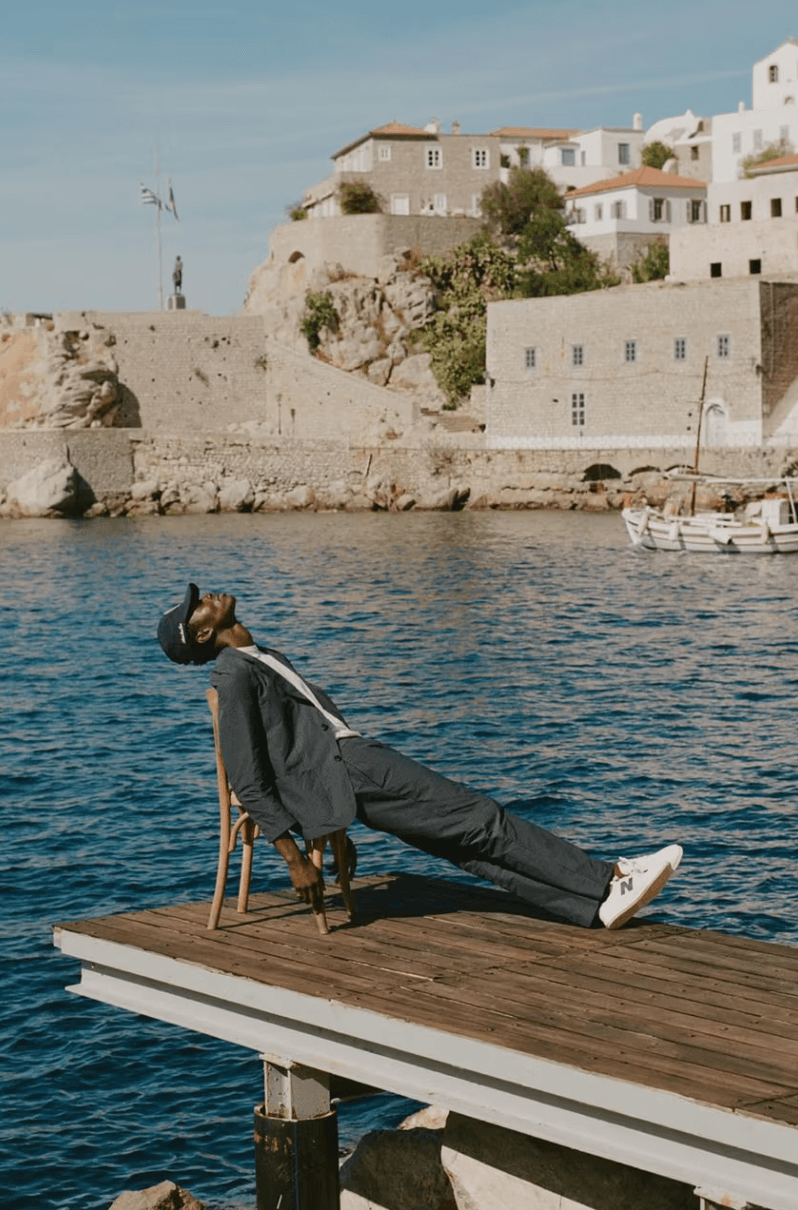OPINION: Are We in a Tavli Renaissance?
New York is experiencing a surge of Backgammon-playing residents.
Our Founder, Konstantina, shares her thoughts on how we might have gotten here and what it means for our community.
Backgammon is one of the oldest board games in the world. It can be traced back 5,000 years and is claimed to have originated in Mesopotamia, which is modern day Iraq. An early version of the game was located in King Tut’s tomb, the ruling class of ancient Rome played it, Shakespeare mentioned it in his works, and even Hugh Hefner hosted Backgammon parties at his Playboy Mansion.
Russian Prince Alexis Obolensky Jr. was known as the “Father of Modern Backgammon,” and is claimed to have introduced it to America in the 1940s and popularized it among the elite. The tournaments he organized were featured in the likes of Sports Illustrated. There are, however, more humble iterations of the game that have somewhat quietly remained in their own communities until today.
Anyone can easily learn how to play Backgammon— there are numerous written and video tutorials to choose from. These days, there’s an even better chance that someone can learn by visiting a nearby café or joining a Backgammon club. In some communities, it’s something that has naturally been passed down for generations.
As a Cypriot-American, I can confirm that Backgammon – called “Tavli” in Greek – is normally something that my dad and uncles play at family parties. Growing up, I’d watch them roll the dice with enthusiasm and glide their chips across the board, all while cradling dried chickpeas, nursing red wine, and talking about their latest garden harvest. In Greece and Cyprus, it’s traditionally a game you’d see older men play at kafenios (coffee shops).
Within these contexts, the game feels a bit masculine, but that’s not entirely true. Melina Mercouri, the iconic Greek actress from the 1960s, was a notoriously talented player— inside and outside of her movies. Today, everyone is playing it.
For the past few years, I’ve seen Tavli surface in unusual places: on my social media feeds, on luxury fashion websites, and at cafés across New York City. This all made me wonder, are we in a Tavli renaissance?
I have my theories. One of them traces back to the founding of a fashion brand that has stolen many of our hearts yet still manages to exude an exclusivity that makes its audience feel like they’re part of a secret club: Aimé Leon Dore (ALD).
ALD has not only reached cult status for its street-style-meets-preppy aesthetic, limited edition collections, and storytelling marketing, it also — intentionally or not – reshaped the retail experience and exposed the Greek-American lifestyle to the mainstream.
When ALD moved its flagship to Mulberry Street in 2019, it attached a small coffee shop called Café Leon Dore to it, which was akin to a village kafeneio in Greece with a French twist. Byzantine icons, komboloi, and vintage posters of Greece adorned the walls, kourambiedes and other glyka (sweets) dotted the glass display cases, and it finally brought the freddo espresso to New York, which became its own TikTok sensation.
Few brands have brought Greek hospitality into the zeitgeist quite like ALD. It did not achieve this by designing clothes with Hellenic motifs or colors, but succeeded by taking inspiration from the island lifestyle that’s so rooted in building communities and cultivating traditions. ALD’s aesthetic is told through transportive, narrative-based campaigns and look books, many of which have been set on Greek islands and feature rebetiko music, all inspired by founder Teddy Santis’ life as a first-generation Greek-American from Queens.
From my understanding, the Tavli board on display at the ALD café remains sedentary and is merely for decoration. While the brand might sell a version of the game on its website, it never initiated any tournaments or gave people boards to play with while they indulged in their coffee. What I believe ALD did was bring the Greek way of life into larger fashion and lifestyle conversations and spearheaded the rise of kafenio culture in New York.
Following the excitement for ALD, came the opening of Café Lyria. Located just a few blocks away on Crosby and Bleecker Streets, two brothers from Kos (one of whom used to work at Café Leon Dore) established this new spot that’s become one of the hottest hangouts in the city.
I first visited Café Lyria to get my frappe fix (yes, I do prefer this classic) after ALD initiated its virtual coffee queue as a way to manage its influx of fans who clogged the block. I knew that it would be accessorized with typical Greek decor — such as Hellenic newspapers, ancient statues, and other nostalgic tokens — but what I wasn’t expecting to see where young New Yorkers gathering over a game of Tavli.
While Café Lyria has held Backgammon tournaments, part of the fun is playing casually with strangers who are sitting nearby. The game becomes a natural catalyst for unexpected connection, something that I think perfectly emulates the beautiful moments of traditional kafenios in Greece— they are destinations where new bonds are formed and old friendships are strengthened.
I initially felt uneasy when I saw New Yorkers playing Tavli. The sight distorted my isolated, first-generation American reality and I felt that something that was so precious and particular to my world would become diluted as it entered into the mainstream. I thought that these New Yorkers mustn't fully understand or appreciate the history behind the game or the nostalgic wonder that comes from playing it, but is it important that they do? Perhaps not. While still a competition, there’s a natural camaraderie that results from playing, and this might be the most important thing to recognize about its resurgence.
Outside of the microcosm of contemporary Greek cafés in the city, Backgammon has generated its own global buzz in art, fashion, news, and nightlife.
The lifestyle brand Cult Gaia just released a Backgammon clutch and Hellenic Aesthetic, America’s first Greek fashion retailer, designed its own traveling set more than a year ago and restocked it this summer due to its popularity. Designer Adam Brown and Italian photographer Pierpaolo Ferrari even listed it as one of their favorite things in their recent Air Mail Guest Edits.
Backgammon tournaments have also popped up in unusual places. Gallery founder Stefania Bortolami hosts an invitation-only Backgammon league, Sabah, the footwear brand with roots in Turkey, occasionally has tournaments in its stores, and the NYC Backgammon Club has become quite popular among young professionals in the city. In response to its prevalence, a new Backgammon café called 7 Spring opened in Nolita where you can rent, buy, or bring your own board.
To help me better understand where the surge in interest came from and why it’s resonating with such a young crowd, I spoke with Remington Wells Davenport, founder of the NYC Backgammon Club.
“This is a revival that celebrates tradition while adapting to contemporary culture,” she said. “In our increasingly digital world, there’s a growing desire for in-person social connections, and Backgammon provides that— a shared experience where people can bond over a board, whether in a café, bar, or organized club. Backgammon's portability, accessibility, and its mix of competition and fun have contributed to its modern appeal. Add to that the visibility from social media and events, and it’s easy to see why people are excited about the game.”
Davenport shared that she’s worked hard to create a diverse and vibrant community where everyone feels welcome to play, even if they’re beginners. “Backgammon is a timeless game with a perfect balance of strategy and luck, making it approachable for new players while still deeply engaging for seasoned ones,” she added.
While it feels as if we’ve traded in our sweet, Tavli-playing pappous in mustaches for Tavli-playing cultural aesthetes in white tees, canvas totes, and skateboards, the excitement for the game in the city is palpable. Maybe Tavli is exactly what New York craves— a superior way for building new connections in a dizzily digital world.










